DIY to the Rescue: 10 Librarian-Tested Passive Programs
Self-directed programming can be as simple as a table with coloring sheets and wildlife livecams or as in-depth as a complex scavenger hunt.
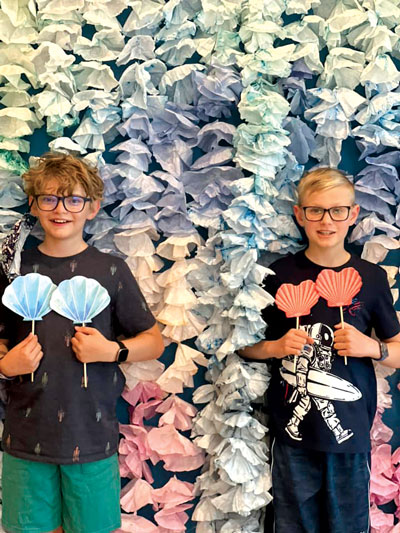 |
Kids pose with their ocean-themed crafts in a photo booth at the Agave Public Library in Phoenix, AZ. |
Youth librarians are a busy lot. Between the stacks of potential story time books, piles of yarn, construction paper, and googly eyes scattered across our workrooms; snacks for teens; and monthly reports to write, finding time to plan and execute great programs can be no easy feat.
What to do? This is a reminder that activities can be outstanding without bells and whistles, and a librarian running everything. Programs that are well attended and meaningfully engaging don’t have to be time-consuming or expensive, either. Some of the best ones are passive.
Passive programming—more dynamically known as self-directed or lightly guided programming—involves activities that patrons can pursue on their own terms, on a come-and-go basis, without supervision from library staff. They can be as simple as a coloring table with coloring sheets in the children’s or teen space, or as in-depth as a scavenger hunt or months-long battle of the books tournament conducted by vote.
These can also be useful, low-stakes entry points for new librarians or librarians still getting to know their communities, say Andria Amaral and Paula Willey, coauthors of The Passive Programming Playbook: 101 Ways to Get Library Customers Off the Sidelines (Libraries Unlimited, 2021). But really, all librarians need some passive programming ideas up their sleeves.
“Passive programming serves to demystify the entire library space for customers,” says Willey.
Amaral reports that circulation and teen program participation has increased at her library with more passive programs, which also offer an easy way for her to get to know teens. In her early days as a teen librarian, she used whiteboard questions and tip-jar polling at the reference desk to learn about the interests of her young community. She built more personalized programming based on the responses.
Another advantage relates to “a fundamental foundation of retail,” she says. “The longer you can get someone to stay in your space, the more likely they are to buy.” So when kids are lingering during scavenger hunts, “parents are browsing and picking up even more items to check out or visiting sections of the library they don’t usually see.”
How do you gauge success? Counting the stickers given out for completed scavenger hunts, written answers on a white board, or votes in a poll are ways to measure engagement, even when you’re not there. Amaral and Willey encourage librarians to go further in reporting. “Write the narrative,” Willey says. “Every time a kid completes the scavenger hunt, they walk through 40 percent of the library. [And] they have a verbal interaction with a staff member at the desk.” Inspiring anecdotes, like patrons discovering new interests or collections because of a passive program, speak volumes to administrators and local leadership. “We all love a good story,” says Willey.
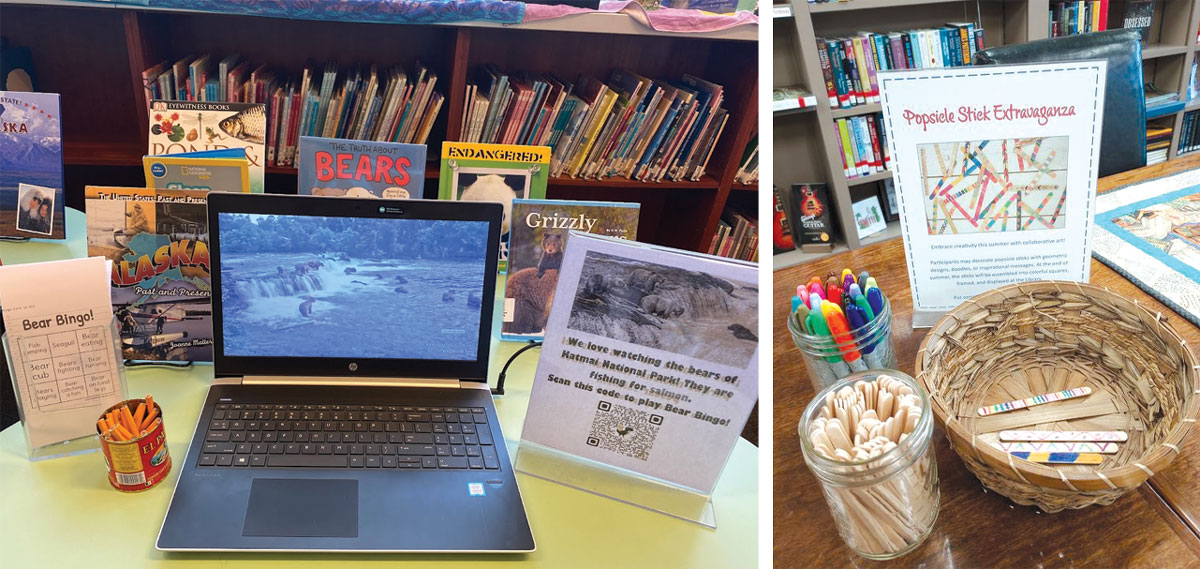 |
: center;">
From left: A livecam and other items related to Fat Bear Week; a popsicle stick exytravaganza |
10 IDEAS TO GET YOU STARTED
Collaborative art projects
Allowing patrons to contribute to a collective art project builds community and gives them a sense of ownership of the library. The activities can be simple and inexpensive, making use of leftover craft supplies in your closet. If you’re looking for a project that is fairly inexpensive, “try the Popsicle Stick Extravaganza!” says Rachael Blomquist of the Putnam County (IL) Public Library. Patrons decorate popsicle sticks with markers, googly eyes, yarn, and other bedazzles. At the end of the program series, the sticks are fashioned into a mosaic and hung in the library. “It has been extremely popular,” Blomquist says.
Community collections/show-and-tell
If you have a display case in your library, consider using it to allow your patrons to show off their own collections of special items. Kids are natural collectors, and there’s a reason show-and-tell never gets old: they love sharing their interests with others. Give them a platform by allowing them to display their collections at the library.
As part of its summer program, the Princeton (IN) Public Library offered a community collection series called “My World in Ten Objects.” “The things that constitute ‘the world’ for each of us differ based on our experiences, interests, desires, and our physical/geographical circumstances and travels,” says director of youth services Ron McCutchan. Staff contributed their own collections, with text or visual content, to kick off the program, also allowing patrons to get to know their library workers better.
Livecams and interactive displays
Willey’s favorite passive program was an interactive display for Fat Bear Week, an annual October event that celebrates bears in Alaska’s Katmai National Park as the animals bulk up for hibernation season. Willey connected a computer monitor to the display and ran a live feed from Explore.org all day showing bears in the park. Willey displayed books about bears for all ages and included fun activities to engage viewers, such as Bear Bingo. “Bingo is great because they can look for actual behaviors,” Willey says. “We saw somebody jump. We saw somebody roll over. This introduces the scientific skill of observation and prediction.” Plus, “the kids got to experience nature in a way they don’t usually get to, and that’s what made me most happy,” she says. Consider activities related to other nature livecams, too.
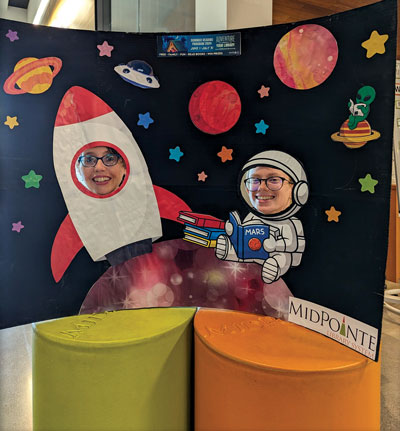 |
A portable photo opportunity created from a tri-fold display board. |
Photo booths
A photo booth is a simple and inexpensive program that doubles as a library marketing opportunity. Reserve a small area in your library and supply fun props for patrons to use as they take photos with their phones. Take an old cardboard box and cut out a frame for participants to hold and pose in. You can decorate the frame according to a theme, such as summer reading or library card sign-up week, and change out as needed. Include a suggestion to share the photo on social media and tag your library for some easy, stress-free promotion. Patrons will make lovely memories at your library—and you’ll have ready photo evidence of how valuable your library is to your community.
Play dates
The easiest way to introduce passive programming for babies and toddlers is to include puppets and toys in your children’s space. Providing play things encourages families to come and stay, build memories in your library, and make library visits a regular habit. Ask your community for donations of gently used stuffies, puppets, and toys to get started without a budget.
Nappanee (IN) Public Library hosts play dates, called Move & Do: Birth to Two, where families can meet at a certain time to socialize and play with toys in the space. It remains one of their most popular program offerings. “The parents and nannies are so grateful to talk with other adults and have a community space where kids can learn the positive ways to interact with other kids through socializing,” says Maggie Carr, youth services assistant. “It’s been amazing to watch.”
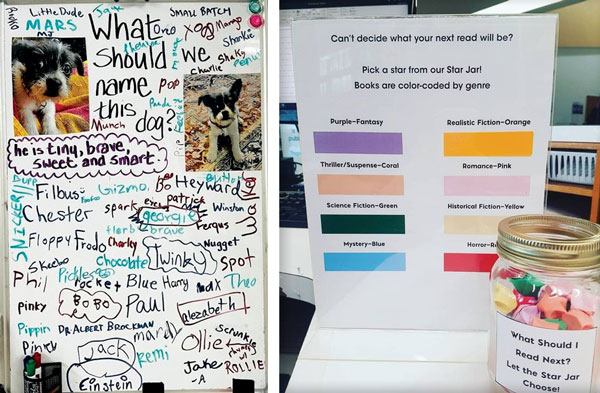 |
From left: A whiteboard poll; the Star Jar at Grande Prairie Public Library |
Polls
Anyone working with teens knows how hard it can be to get them to engage with their library. Passive programming polls make for a natural entry point and are easy to create and maintain. If you have a whiteboard and dry-erase markers, consider creating a high-interest poll—BTS or GOT7?—and let them tally their votes on the board. To lure teens into conversation, make a tip-jar poll and have them cast their vote at the desk—while chatting with the librarian, of course!
Reader’s advisory activities
Recommending great books doesn’t have to be librarian led; young patrons can suggest favorite reads to one another via an easy passive program and display. One example: patrons write book names on a paper link to be added to a chain around the library, or on a small decorative shape that is added to a blank wall or window. They could even add books to a display in the take-a-book, leave-a-book tradition.
Bailey Marie Randolph, a children’s and teen’s services librarian at the Grande Prairie Public Library in Alberta, Canada, created the Star Jar. Patrons pick a colored star from the jar, with the star color corresponding to the genre of their next read. “This was an easy and incredibly successful passive reader’s advisory for teens,” says Randolph. “Other people use slips of paper, but our teens love the stars.”
Scavenger hunts
Scavenger hunts, or seek-and-finds, are highly engaging, encourage children to explore new areas of the library, and provide a conversation opportunity when kids bring their completed scavenger hunt to the desk. Hunts can be adapted for younger kids and double as a tool to promote literacy and print awareness by hiding letters and numbers in a story room. Or they can be scaled up for older kids by upping the difficulty level and including a theme.
Amaral hosted a summer-long mystery scavenger hunt connected to the Collaborative Summer Library Program summer reading theme. She and her colleagues wrote a story called “The Lighthouse Mystery” in which the lighthouse keeper had been kidnapped, and young patrons must use a treasure map of scavenger-hunt clues throughout the library to solve the mystery. “We made ‘missing’ posters for the lighthouse keeper with QR codes kids could scan to get more clues,” says Amaral. Staff filmed videos as different characters in the story, and patrons filled out entry forms to guess the perpetrator and motive.
Sensory gyms
Creating sensory spaces, or sensory gyms, can signal to families that young children, especially those with developmental issues, are welcome in the library. It also provides a space of respite for kids who may need a sensory break and a focal point for children who are easing into the library. The company Lakeshore Learning has many great premade options for sensory tables or gyms. Or, you can get creative like the Murrayville Library in Fraser Valley, British Columbia, and create your own sensory experiences for a Baby Sensory Time. Murrayville staff used laundry baskets and plastic balls for a makeshift ball pit and colorful sand in Ziploc bags for a mess-free experience.
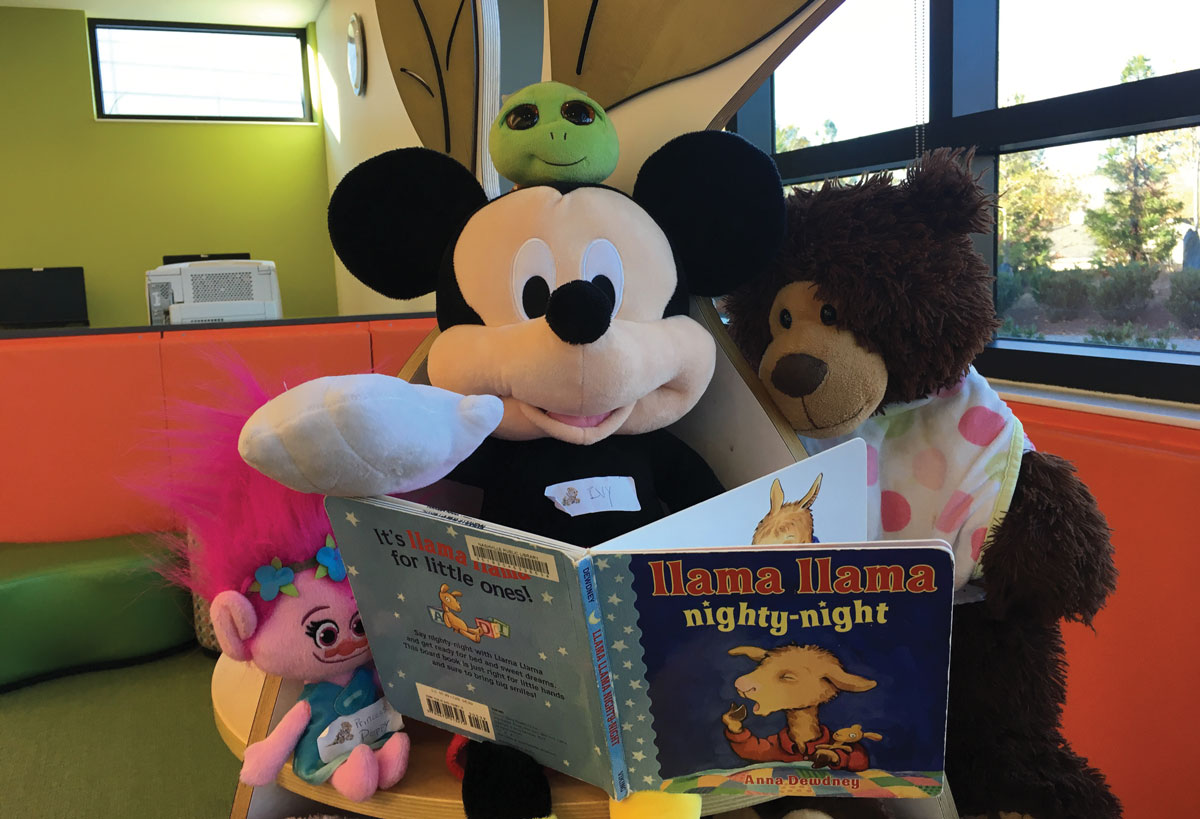
Stuffed animal sleepovers
Katie Sue Buchholtz, a children’s librarian with the Nashville (TN) Public Library, holds stuffed animal sleepovers for her young patrons. Buchholtz collects all the stuffies after story time, then stages pictures with them around the library after hours. The stuffies play with the story room toys, read a book before bed, and are tucked in to drift off to sleep. Buccholtz shares the pictures with the patrons so they can see their stuffies enjoying the sleepover. “The kids love seeing a slideshow of all the silly things their stuffies got into,” says Buccholtz.
At another Nashville library branch, librarian Lauren Hampton created the Babysit a Beanie Baby activity. Children can look through a folder of beanies with information on their favorite foods, colors, and books, and a suggested activity to do with the beanie. Kids pick a beanie to take home to baby-sit, return it when they’re done, and receive an Instamax printout photo with them and their beanie as a souvenir.
Lisa Bubert is a writer and children’s librarian in Nashville, TN.
RELATED
The job outlook in 2030: Librarians will be in demand
The job outlook in 2030: Librarians will be in demand
ALREADY A SUBSCRIBER? LOG IN
We are currently offering this content for free. Sign up now to activate your personal profile, where you can save articles for future viewing






Add Comment :-
Be the first reader to comment.
Comment Policy:
Comment should not be empty !!!